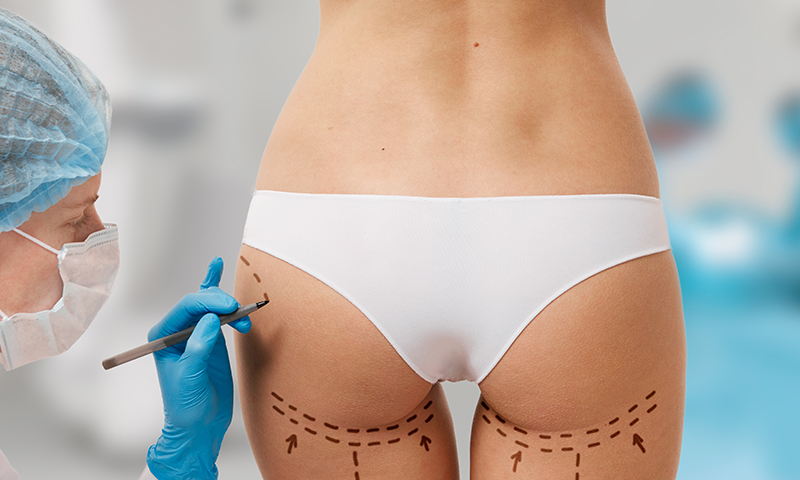Liposuction is a procedure to provide correction of subcutaneous fat tissue only regionally. Removing small cuts under the skin, with the help of thin tubes, the removal of fat from the body is thought to be more than the vacuum process. This process should not be made to lose weight. Because we have to comply with some criteria when doing this. There is a fat removal limit of 4-5 liters. The risk is very low when taken below this limit. However, when this limit is exceeded, the risks increase.
The ideal candidates for patients to undergo liposuction are those who do not have excess weight, have regionally collected fat (eg, hip, flank) and have elastic skin. These operations can be performed under local anesthesia or general anesthesia. If liposuction is to be performed in a very limited area, only local anesthesia is sufficient. For larger areas, sedation can be added. Patients under local anesthesia do not need to be hospitalized. However, those who are operated under general anesthesia should be in hospital for 24 hours and should be under the control of a doctor. Patients should not exert excessive effort for a period of time after discharge.
Liposuction Techniques
Classic liposuction: The skin is cut from a close point to the place to be operated. The cannula is inserted through this hole. The external end of the cannula depends on a device that makes a vacuum. By moving the inner end of the oil to break down. The fractioned oil is removed in vacuo.
Liposuction with injector: The only difference from the classical liposuction degreasing technique is that the tip of the cannulas used is attached to a large injector instead of the aspirator device. The oils collected are collected in the injector. It is applied in patients who need to fill the extracted oils.
Ultrasonic liposuction: It is a system that is almost never used today. It was very popular in the 1990s, however, when it became apparent that ultrasonic energy was causing damage to the skin, this method was gradually abandoned.
Vibroliposuction: In the classical liposuction technique, the forward and backward action of the cannula in the vibroliposuction technique provides a motor that is placed in the handle part of the cannula, while the forward and backward action of the cannula provides the surgeon's arm movements.
After these operations, the re-collection of fat does not occur very easily. In order to have such a thing, the patient must have a serious weight gain.
Are they at risk?
The risks of this operation are no different than other operations. For example, in any surgery under the name of general anesthesia, what is the risk, so that is the operation. If the patients do not have any additional disorders, a routine operation can be performed.
Liposuction is an aesthetic surgery. An aesthetic plastic surgeon should be consulted. Under the jaw, cheek, neck, inner parts of the arm, breast, abdomen, belly, waist, hip, around the genital organs, sides, thighs, knee inner face, back of the leg and ankle can be easily removed from excess fat tissues. Your surgeon will give you all the details you need before surgery. An operation can safely drain up to 4.5 liters. However, you should still listen to your surgeon's advice.
Postoperative:
- Patients with general anesthesia surgery should remain under medical supervision for a while.
- The post-operative pain can be controlled by your doctor.
- Swelling and bruising may occur in the operation area. The duration of these traces is 2-3 weeks.
- If stitches should be taken within 5-10 days. It will take 8 weeks for the swelling to come down and the appearance of body contours. Surgical scars also become vague in 2-6 months.





Let's Call You